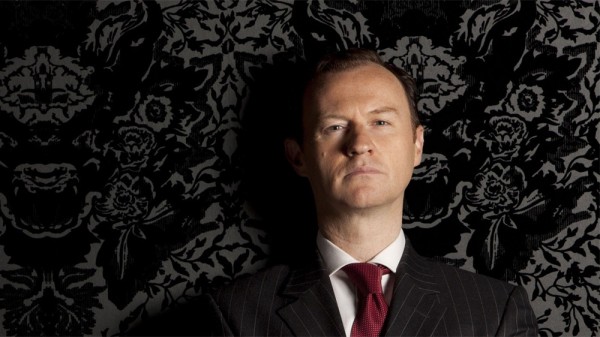Mark Gatiss – The League Of Gentleman star, Doctor Who writer and lifelong horror fan – celebrates the horror film in his new three-part series for BBC Four, A History Of Horror With Mark Gatiss.
Episode 1: ‘Frankenstein Goes To Hollywood’
Monday 11th October 2010
The first episode follows Mark as he brings his passion, expertise and humour to the golden age of Hollywood horror. From the Twenties until the Forties, a succession of classic pictures defined the horror genre. Mark explains just how daring and pioneering these films were, and why they still send a chill down the spine today.
Mark starts with silent film Phantom Of The Opera, starring Lon Chaney, “the man of a thousand faces”. Mark explains how Chaney achieved his ground-breaking make-up effects, and shows how the Phantom’s success kick-started the horror boom. He recounts how a modest British touring play inspired the first great horror talkie, Dracula, with Bela Lugosi, and demonstrates how British director James Whale radically moved the genre on with Frankenstein, featuring Boris Karloff’s unforgettable portrayal of the monster.
Mark explores the increasingly camp and daring themes of James Whale’s work in Bride Of Frankenstein and The Old Dark House, whose star Gloria Stuart, now 99, reveals what it was like to work with Whale and Karloff. Mark shows how Hollywood horror changed and evolved, becoming dark and perverse (in films such as Freaks), and light and humorous (the swashbuckling Son Of Frankenstein), before a final flourish with the psychological horror of RKO Pictures films (Cat People, I Walked With A Zombie), which still influence directors today. But by the early Fifties, the monsters were facing their biggest threat – the rise of science fiction films in the post-war atomic era.
Along the way, Mark steps into some of the great sets from these classic films, discovers Lon Chaney’s head in a box, and finds out why Bela Lugosi met his match in Golders Green.
Episode 2: ‘Home Counties Horror‘
Monday 18th October 2010
In this episode, Mark tells the stories behind the films of the Fifties and Sixties, which fired his lifelong enthusiasm for horror when he first saw them on TV as a child.
These mainly British pictures were dominated by the legendary Hammer Films, which rewrote the horror rulebook with a revolutionary infusion of sex and full-colour gore – all produced in the English Home Counties. Mark explains just what made these films so special.
He meets key Hammer figures to find out why their Frankenstein and Dracula films conquered the world, making international stars of Christopher Lee and Peter Cushing. He looks at the new boom in horror that followed in Hammer’s wake, talking to Barbara Steele, star of the ravishing Italian film Black Sunday, and influential American producer Roger Corman, creator of a series of disturbing and dreamlike Edgar Allan Poe films.
While an excessive emphasis on sex helped fuel Hammer’s decline after the late Sixties, Mark recounts how other British horror films flourished, including the portmanteau films of Amicus Productions, which were structured around sequences of short stories, and the intriguing cycle of “folk horror” films set in the British countryside and drawing on paganism and folklore – such as The Wicker Man and Mark’s personal favourite, Blood On Satan’s Claw.
Mark also talks to actors Barbara Shelley and David Warner about their horror appearances, makes a pilgrimage to Whitstable, home of Peter Cushing, and finds out why Dracula’s bedroom activities got the British censor steamed up.
Episode 3: ‘The American Scream‘
Monday 25th October 2010
In the final programme, Mark explores the explosion of American films of the late 1960s and 70s which dragged horror kicking and screaming into the present day. With their contemporary settings and uncompromising content, films like Night of the Living Dead and The Texas Chain Saw Massacre remain controversial. But Mark argues that the best of these films – often regarded as only being for hardcore fans with strong stomachs – have much to offer. Made by pioneering independent film-makers, they reflected the social upheavals of American society and brought fresh energy and imagination to the genre.
Mark gets the inside story of the films from a roster of leading horror talent. He meets director George A. Romero, whose Night of the Living Dead and Dawn of the Dead turned zombies into A-list monsters; sits down with Tobe Hooper, the mild-mannered director of the notorious Texas Chain Saw Massacre; and joins location director John Carpenter on a tour of the locations where he filmed the smash hit Halloween, which triggered the slasher movie boom.
Mark also gives the Devil his due, celebrating the other great horror trend of the era – a string of satanically themed Hollywood blockbusters, including Rosemary’s Baby, The Exorcist and The Omen, which helped horror conquer the box office.
Along the way Mark visits the Bates Motel, gets mobbed by zombies, and finds out what happened to Omen star David Warner’s decapitated head.

